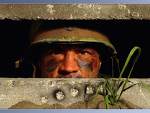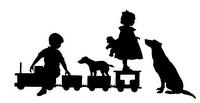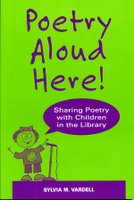
Have you seen the news lately? It’s sad and scary to see the multiple conflicts occurring around the world. The ongoing American military presence in Iraq and now the heightened violence in Israel and Lebanon, for example, touch the lives of children, too—both there and here. Poets throughout the ages have chronicled experiences of war or captured the emotions we find difficult to express at such times. Even poetry for young people has tackled such tough topics. Here’s one example poem from Lee Bennett Hopkins’ anthology HAND IN HAND: AN AMERICAN HISTORY THROUGH POETRY (Simon & Schuster, 1994):
The Last Good War-- and Afterward
We saved enough tinfoil
To wrap the entire world,
Said the Pledge of Allegiance,
Read a chapter of the Bible each day,
And even prayed . . . at school.
Then we turned our radios on,
Went to the movies . . . saw newsreels
And learned to hate
Whole nations of people
We would have to learn
To love again, later.
by Isabel Joshlin Glaser
Poems such as this help us gain some perspective, or express difficult emotions, or simply pause to breathe and reflect. In times of trauma and grief, we often turn to a favorite poem or song for reassurance. Their words help us cope. Several collections of poetry for young people look at war from both historical and contemporary perspectives. Some even offer the young person’s point of view. Although we all enjoy poetry that is humorous or nonsensical, serious poetry has a place in our lives, too, particularly when life gets serious. Children feel the same way, so consider offering them this outlet alongside the usual lighter fare. Here are a few outstanding collections that include poems about war:
Crist-Evans, Craig. 1999. MOON OVER TENNESSEE: A BOY’S CIVIL WAR JOURNAL. Houghton Mifflin.
Katz, Bobbi. 2000. WE THE PEOPLE: POEMS. Greenwillow.
Meltzer, Milton. 2003. HOUR OF FREEDOM: AMERICAN HISTORY IN POETRY. Wordsong.
Robb, Laura, comp. 1997. MUSIC AND DRUM: VOICES OF WAR AND PEACE, HOPE AND DREAMS. Philomel.











